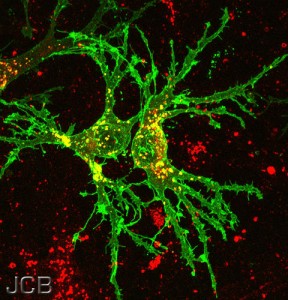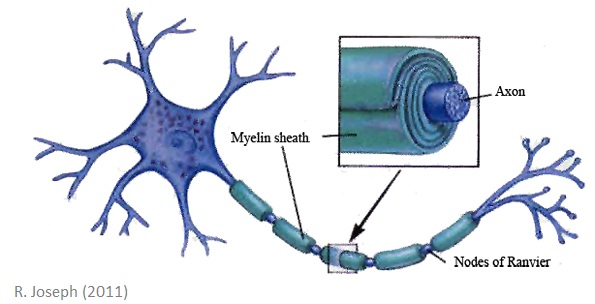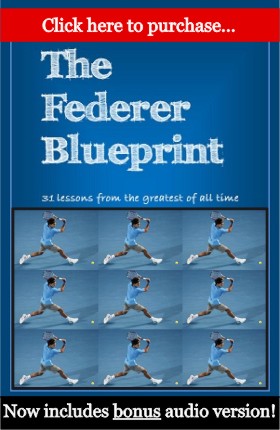How To Build A Tennis Brain
16 Jan
 One of the great break-throughs in studies of sports performance is the discovery that physical skills improve as a result of physical improvements in the wiring of our brain. This means we can physically re-wire our brain for tennis or any other sport.
One of the great break-throughs in studies of sports performance is the discovery that physical skills improve as a result of physical improvements in the wiring of our brain. This means we can physically re-wire our brain for tennis or any other sport.
Where Are Our Tennis Abilities Stored?
Every human skill is created by chains of nerve fibres carrying a tiny electrical pulse, in other words a signal travelling through a circuit in our brain (that’s right, our skills exist in our brain rather than in our muscles). When we perform a specific skill, the specific circuit controlling that skill is activated. When we repeatedly fire this circuit (by practicing), we stimulate the growth of a substance called myelin.
Myelin begins as tiny strands that attach to the stimulated circuit, and with continued firing forms a sheath that insulates this circuit [1]. This sheath can be likened to the insulation of copper electrical wiring, which prevents leakage of current from the circuit and short circuiting. The thicker the myelin casing becomes, the better insulated the circuit becomes, and the more reliable the circuit.
Broadband for Your Brain
This transformation can be likened to converting a narrow potholed road into a multi-laned freeway. Daniel Coyle calls it a superhighway or “broadband for your brain”, as it allows information to travel at much higher speeds and successive signals to be sent much more rapidly, boosting your overall ability to process information by up to 3000 times!
Each layer of myelin increases the speed and accuracy of the skill being performed, and more importantly this IS what makes up a skill (i.e. each skill is simply a reinforced circuit in your brain). Every skill we have (from tying a shoelace to a backhand overhead smash) has been built this way. If we have a skill, it is because we have fired the circuit for it (by practicing or performing it) repeatedly until enough myelin was formed to make the skill repeatable, reliable, and fluent. Weak skills are weakly myelinated and our best skills are the the most myelinated.

This Explains Why There Are No Shortcuts
Myelin explains why the 10,000 hour rule applies across so many different types of performance (including a wide range of sports as well as non-sporting fields) – because there is a common physiological mechanism that is responsible for the rate of skill acquisition in all fields. While over time incredible transformations can occur, the rate that anyone can improve over shorter time periods is limited by this mechanism. This is why all humans are only able to reach mastery bit by bit, day by day, and research has shown that that is the only way anybody ever has achieved greatness in any field.
Your Brain is Like a Muscle
The big shift from traditional thinking is to think of skill as a muscle that can be built. When you use your muscles in a specific way by training them to their maximum, those muscles will respond by getting stronger. But it takes time, because there is a limit to how quickly a muscle can be repaired. In a similar way, by firing your skill circuits in a specific way (by struggling to perform a skill at or above your current limits) these circuits will respond by getting faster and more fluent, but the rate of improvent is also limited physically[2].
How Can This Help Us Practice?
Any tennis player knows that the use of repetition is fundamental in tennis coaching, but now we can see why! Repeated firing of a skill circuit builds myelin, which improves the speed, capacity and reliability of the circuits responsible for a skill, and therefore improves our performance of the skill.
Now that we understand WHY practice works, we can make our practice more effective by better exploiting the myelin mechanism. As an analogy, think of the way we can make crops grow faster and bigger by understanding what makes them grow in the first place.
Next Step
In my next post we will discuss the 5 ways we can design perfect practice sessions to build a brain that is truly wired for tennis…
References
[1] Fields, R.D. (2008) White Matter Matters. Scientific American, March 2008, p54-61.
[2] Coyle, D. (2009) The Talent Code: Greatness isn’t born. It’s grown. Here’s how. Bantam Books, New York.

